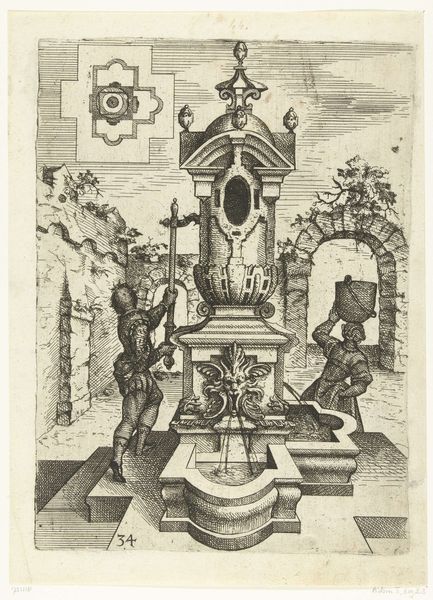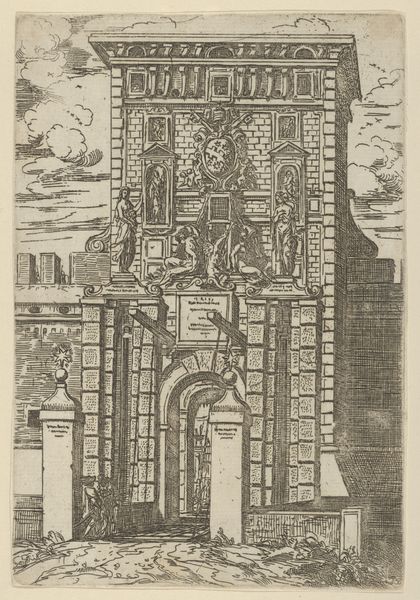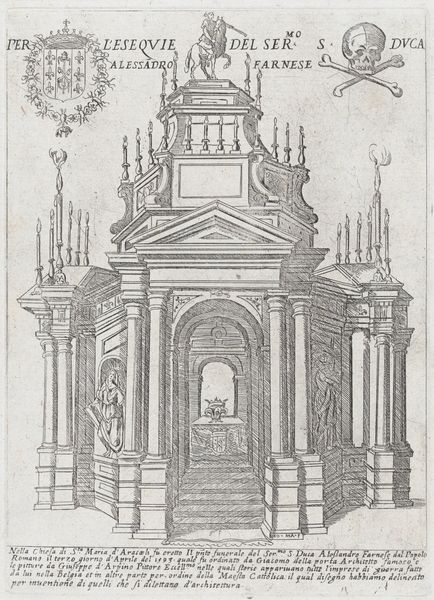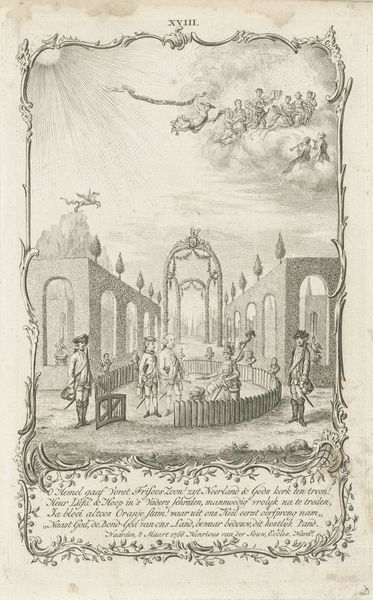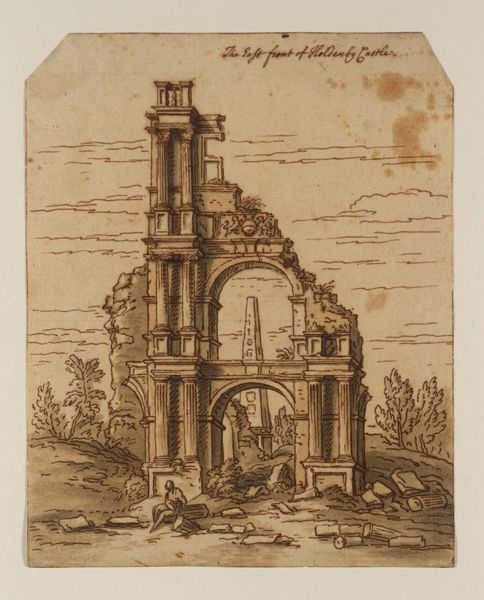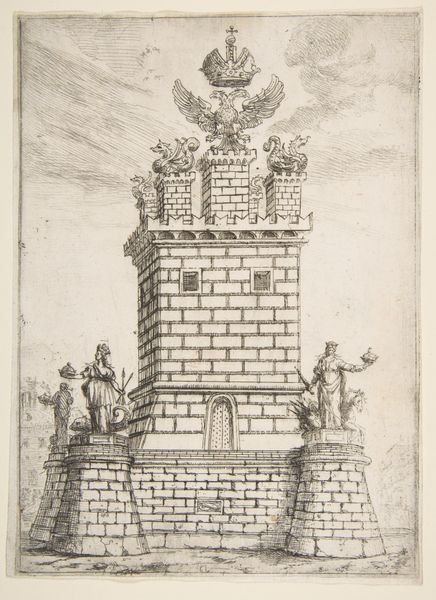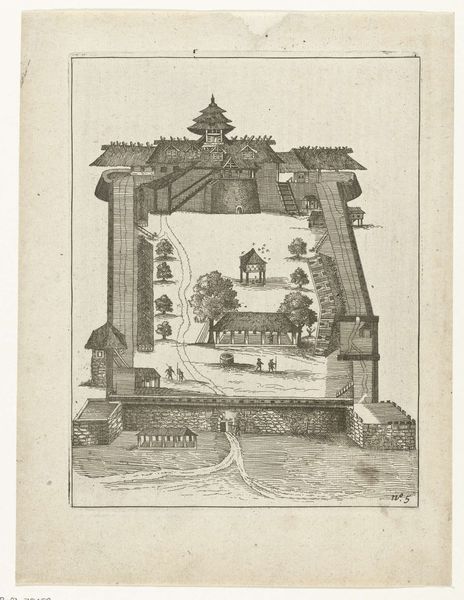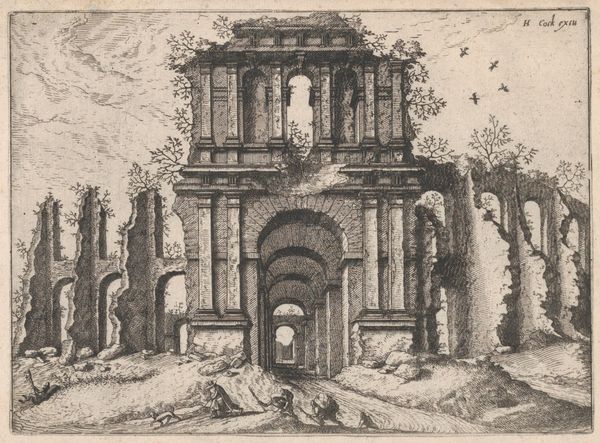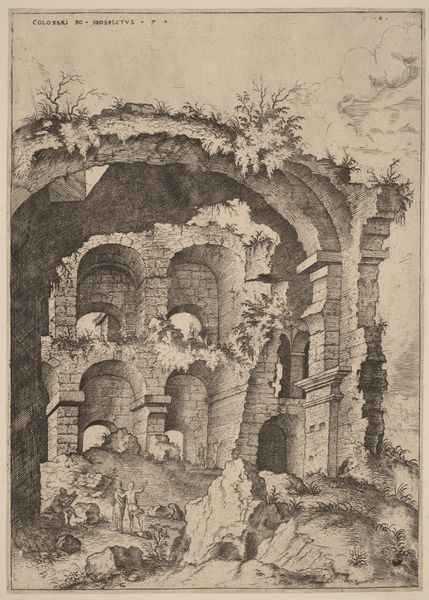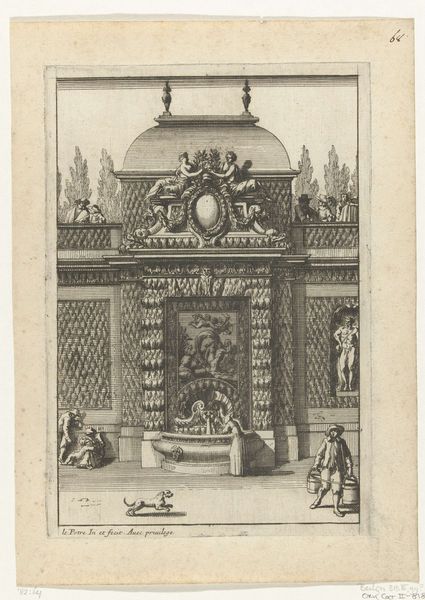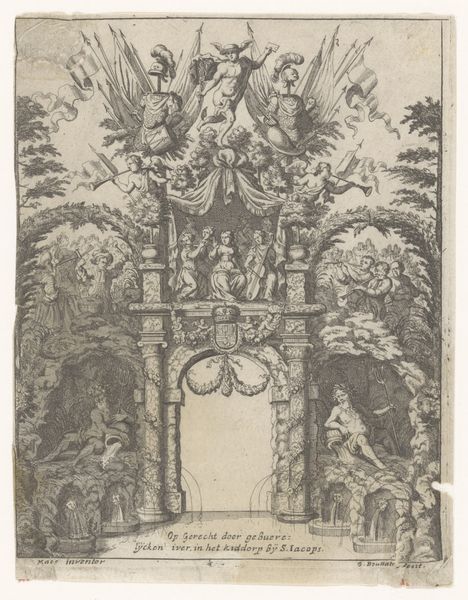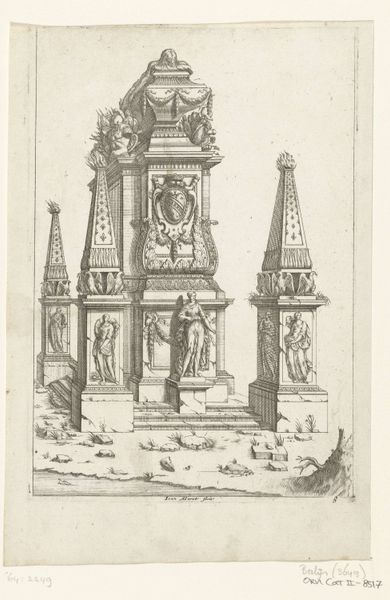
Fontein met duiven in de tuinen van Villa Doria Pamphilj te Rome 1653 - 1691
0:00
0:00
print, engraving, architecture
#
baroque
# print
#
pen sketch
#
old engraving style
#
landscape
#
engraving
#
architecture
Dimensions: height 354 mm, width 238 mm
Copyright: Rijks Museum: Open Domain
Editor: Here we have Giovanni Battista Falda's "Fontein met duiven in de tuinen van Villa Doria Pamphilj te Rome," created sometime between 1653 and 1691. It's an engraving, and what strikes me is the rigid symmetry; it's so structured, yet playful with the water features. How do you approach interpreting this work? Curator: I observe first the linear precision achieved through engraving. The artist employs line weight to delineate form, texture, and spatial depth. Note the architectonic structure – the fountain itself, its careful arrangement of tiers, niches, and water elements – acting as the primary formal element, dictating the composition. Can you see how Falda controls the composition, drawing the eye upwards through balanced levels? Editor: Yes, the repetition of arched forms and the way the water mimics the shapes creates a strong visual rhythm. Are there specific features or details that are structurally significant? Curator: Precisely. Consider the deliberate placement of figures. They populate the foreground and guide our entry into the scene, becoming integral to the spatial structure. The varying textures created through the engraving technique simulate depth and volume in a way that contrasts architectural solidity with ephemeral natural elements, wouldn’t you agree? Editor: Absolutely, the contrast between the solid stonework and the fluid water really enhances the sense of depth. Thanks, I'm noticing how important it is to observe the artist's handling of the medium to decipher the artwork's form. Curator: Indeed. We often overlook the basic language that underlies so much artistic meaning. Paying close attention to the formal composition yields insightful avenues for a much deeper appreciation of the image as a constructed whole.
Comments
No comments
Be the first to comment and join the conversation on the ultimate creative platform.
